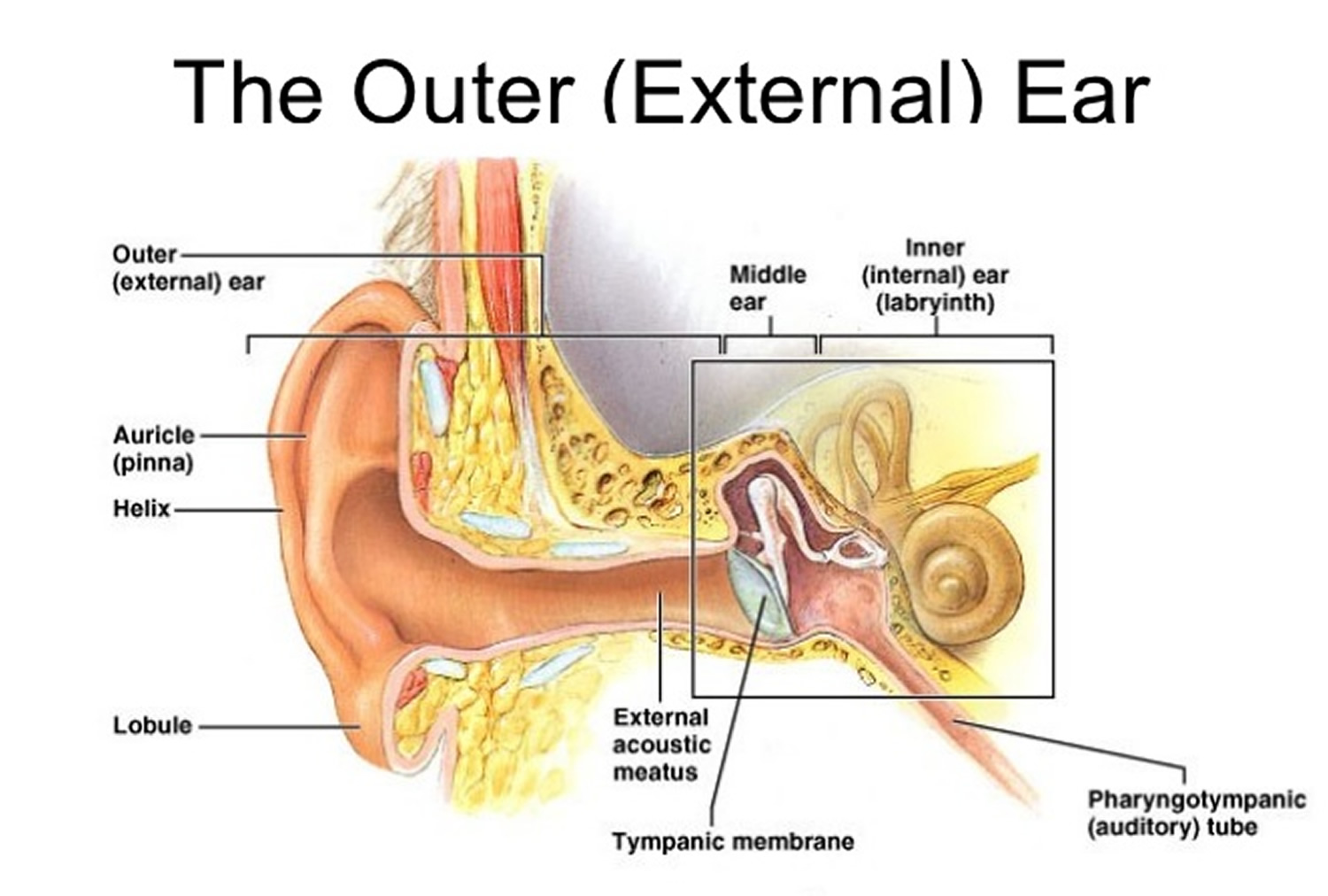The outer ear includes the pinna, which consists of a flexible helical plate cartilage, which extends as a tube in the first third of the ear canal.
A very important role of the flap is an indication that the sound comes from the front or back. The presence of the blade increases 5dV the pressure on our drum sounds coming from the front. It is also a very typical example of someone trying to listen better and putting their hand behind their ear.

It contains hairs towards the outside that are designed to form a defense line against small bugs that want to penetrate the ear. At the roots of the hairs an oily liquid is produced that is mixed with secretions from the adjacent sebaceous glands and the result obtained is the basis of wax (cerumen).
The deeper two thirds of the ear canal (16 mm) have a bony wall, covered by a thin and rather brittle layer, devoid of glands.
In the distant edge of the inner ear canal perpendicular to this is the tympanic membrane (eardrum), which is the boundary between outer and middle ear.